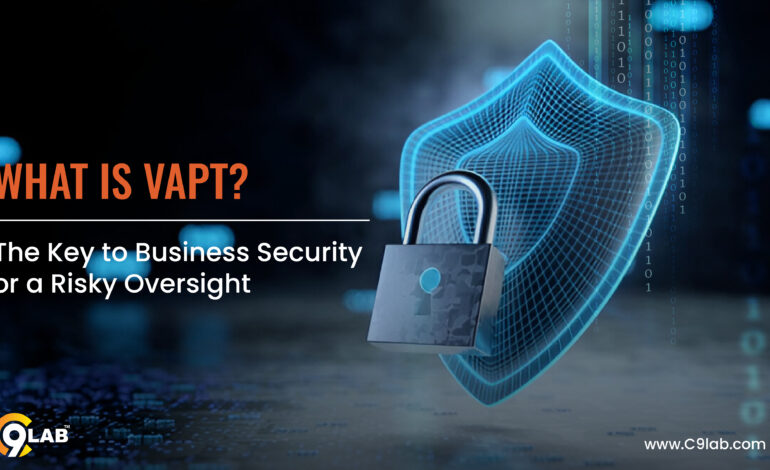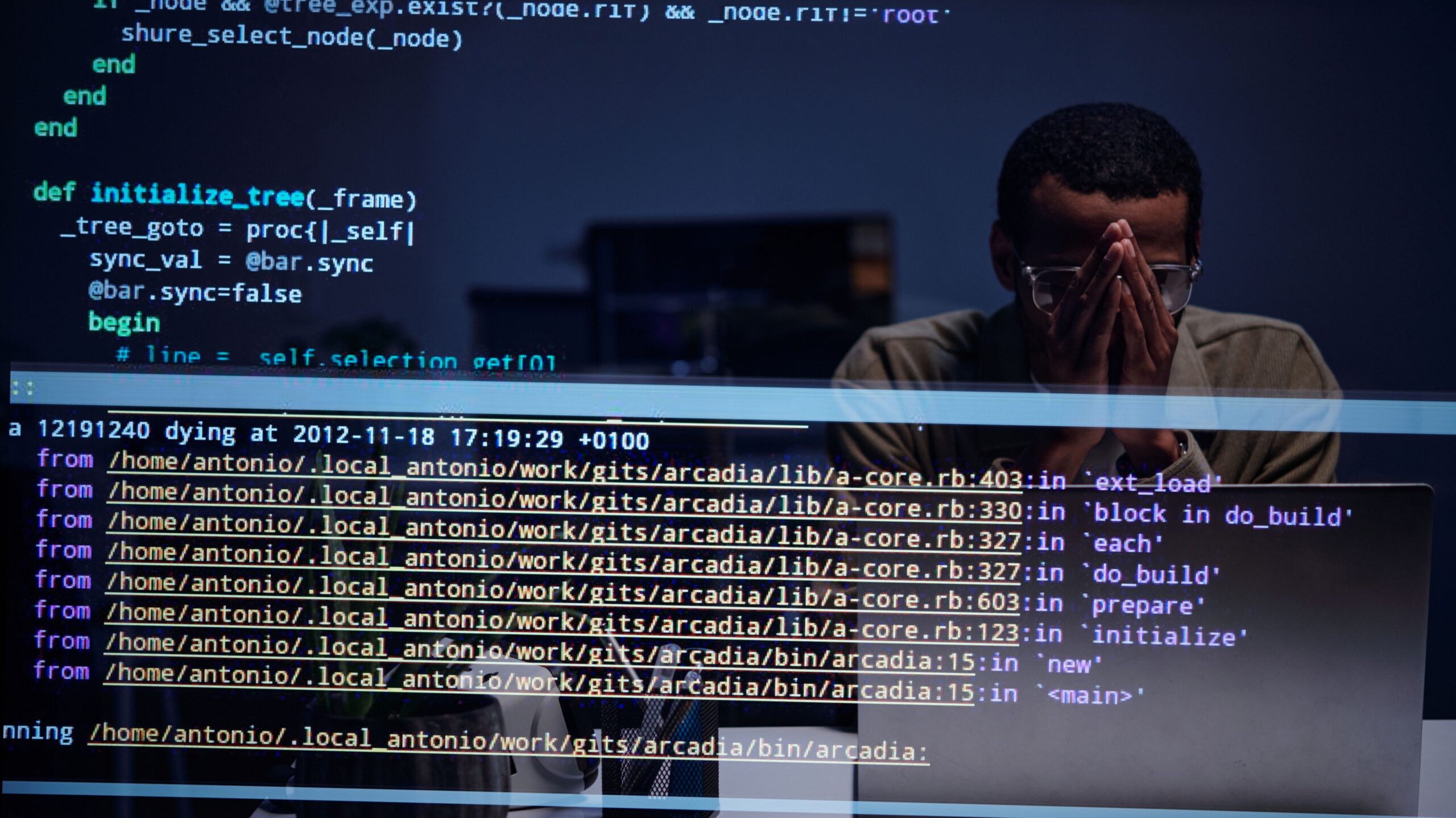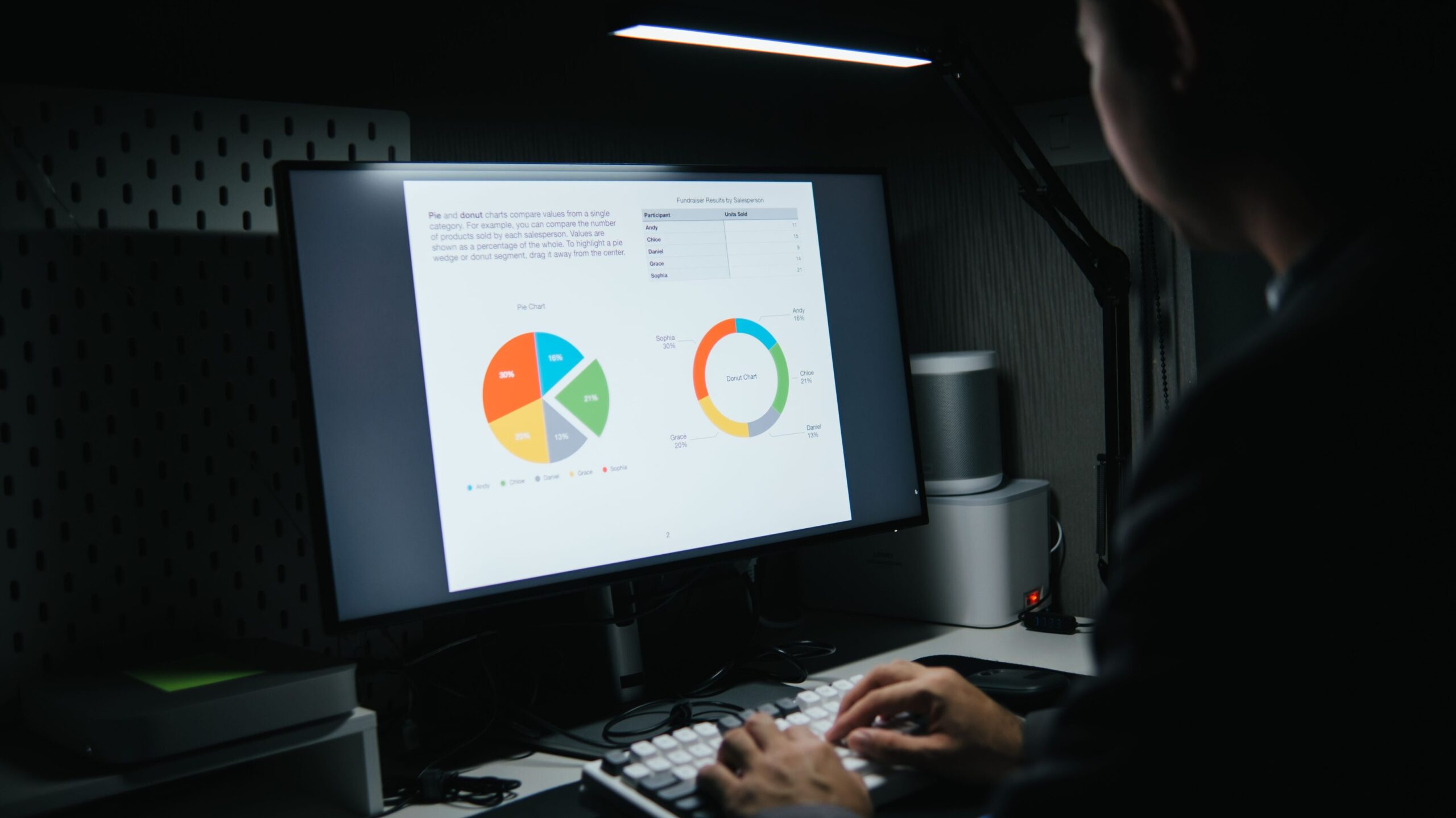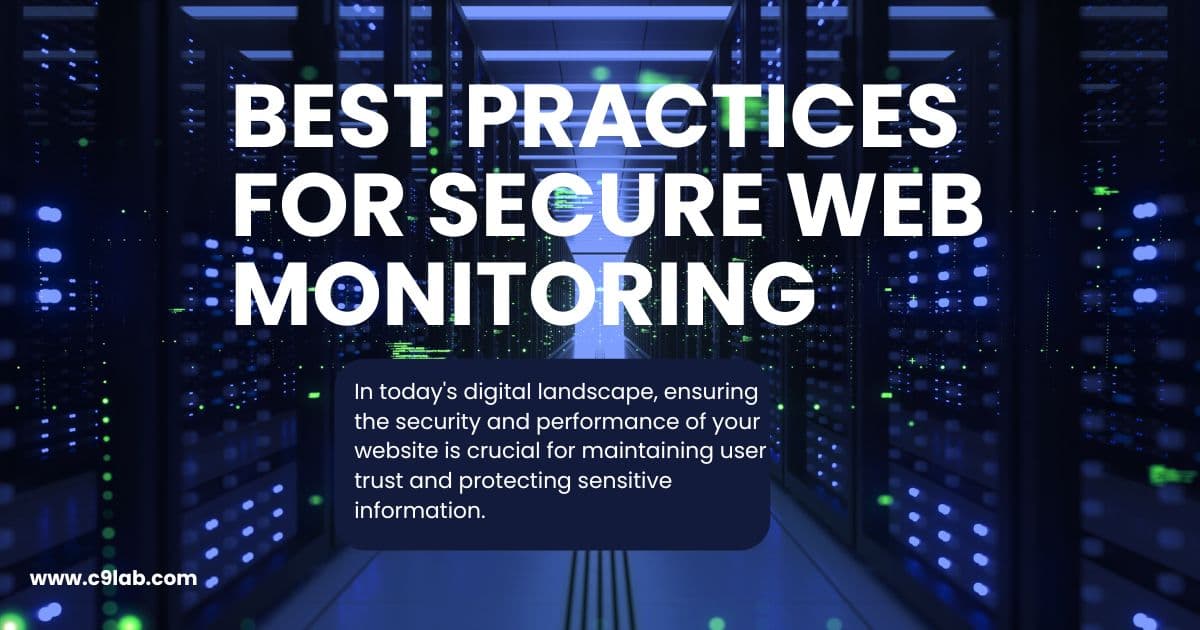
What is VAPT? The Key to Business Security or a Risky Oversight
In today’s increasingly connected world, the security of your business’s digital infrastructure has never been more critical. With cyber threats evolving rapidly, how can you ensure that your organization is truly protected? Enter VAPT (Vulnerability Assessment and Penetration Testing) – a powerful, proactive approach to cybersecurity that can reveal hidden vulnerabilities in your systems before hackers exploit them.

VAPT combines vulnerability assessments and penetration testing to identify, prioritize, and mitigate vulnerabilities, ensuring your business stays one step ahead of cybercriminals. But why should you invest in VAPT? Is it really the key to your security posture, or could it be a risky oversight? In this blog, we’ll explore how VAPT works, its importance in security testing, and why it could be the difference between a secure IT estate and a costly breach.
By understanding the processes of VAPT, you’ll gain insights into how security experts use both automated vulnerability assessments and human-led penetration testing to uncover security gaps in your systems. Ready to dive into the world of VAPT and safeguard your business? Let’s explore. What is VAPT?
When it comes to cybersecurity, protecting your business is no longer just about installing firewalls and using antivirus software. The digital landscape has grown more complex, and so have the threats lurking within it. This is where VAPT (Vulnerability Assessment and Penetration Testing) comes in—a critical part of any robust security strategy.
But what exactly is VAPT, and why is it so important? Let’s break it down.
Vulnerability Assessment: Finding the Weak Spots

At its core, a vulnerability assessment involves identifying potential weaknesses in your business’s infrastructure, whether it’s outdated software, unpatched systems, or even weak passwords. It’s about understanding where your systems could be exposed to attacks.
Here’s what a typical vulnerability assessment looks like:
- Scanning: Automated tools scan your systems to identify known vulnerabilities.
- Analysis: The findings are then analyzed to determine the risk level of each vulnerability.
- Prioritization: Not all vulnerabilities are created equal. Some pose more of a risk to your business than others. A thorough vulnerability assessment helps prioritize which vulnerabilities need immediate attention.
Penetration Testing: Proactive Hacking

Think of penetration testing as an ethical hacker trying to exploit the vulnerabilities found during the assessment. This is the step where security experts simulate real-world attacks to gain access to your systems, mimicking the tactics, techniques, and procedures that a cybercriminal might use.
Penetration testing includes:
- Offensive exploitation: The penetration tester actively attempts to breach your defenses.
- Testing in real-time: Unlike vulnerability assessments, which focus on identification, penetration testing tests your systems in action.
- Reporting: After testing, the findings are compiled into a comprehensive report, offering insights into the weaknesses discovered and how they were exploited.
This step is essential because it gives you a clearer picture of how your business would fare under a real cyber attack.
VAPT: Combining the Best of Both Worlds
When combined, vulnerability assessments and penetration testing form the backbone of security testing. Vulnerability assessments provide the map of your system’s weak points, while penetration testing gives you a deeper understanding of how an attacker could exploit those weak points. Together, they offer a full-spectrum approach to cybersecurity.
By conducting VAPT regularly, your organization can:
- Identify vulnerabilities before they are exploited by attackers.
- Mitigate vulnerabilities through effective remediation strategies.
- Stay compliant with industry standards and regulations, reducing the risk of penalties.
Whether you’re a small startup or a large enterprise, incorporating VAPT into your cybersecurity strategy is one of the most proactive steps you can take to secure your systems and protect your customers’ data.
Ready to see how VAPT can strengthen your organization’s defenses? Let’s dive deeper into the process and uncover how it can become an integral part of your business’s cybersecurity plan.
Why VAPT is Critical for Businesses

In today’s fast-paced, digitally-driven world, businesses face a growing number of cyber threats. Hackers are becoming more sophisticated, and the consequences of a breach can be devastating. That’s why VAPT—which includes both vulnerability assessments and penetration testing—is essential for any business serious about cybersecurity.
But why exactly should you consider VAPT for your organization? Let’s take a closer look at the key reasons why VAPT is critical.
Identifying and Addressing Security Weaknesses
The primary goal of VAPT is to identify vulnerabilities in your infrastructure before they can be exploited by malicious actors. Without a clear understanding of your system’s vulnerabilities, you could be leaving your business exposed to serious risks. Think of it as a diagnostic tool for your IT estate, similar to a check-up at the doctor.
A vulnerability assessment helps you pinpoint weak spots, such as:
- Outdated software or systems
- Unpatched vulnerabilities in critical applications
- Weak passwords or authentication flaws
Once these vulnerabilities are identified, they can be prioritized based on the level of risk they pose to your organization. This allows you to focus on the most critical issues first, minimizing the risk of a security breach.
Building Customer Trust and Confidence

In an age where data breaches are frequently making headlines, customers are more concerned about how their personal information is protected. By conducting regular penetration testing and vulnerability assessments, you demonstrate to your customers that you’re taking cybersecurity seriously.
When customers see that your business is proactive in identifying and fixing security gaps, they’re more likely to trust you with their sensitive information. This trust is vital for:
- Customer retention: Satisfied, secure customers are more likely to stick with your brand.
- Reputation management: Being known as a secure company can be a powerful marketing tool.
Complying with Industry Standards and Regulations
For many businesses, compliance with industry standards and regulations is not just a matter of best practice—it’s a legal requirement. Laws such as GDPR, HIPAA, and PCI DSS set clear standards for data security. Regular VAPT testing can help ensure that your business stays compliant with these regulations.

Here’s how VAPT helps with compliance:
- Identifying security vulnerabilities that could lead to non-compliance
- Providing documentation and reports to demonstrate due diligence
- Mitigating the risk of fines or penalties from regulatory bodies
If your business is subject to regulatory scrutiny, VAPT can be a powerful tool in ensuring you meet all necessary requirements.
Mitigating Financial and Reputation Risks
A cybersecurity breach doesn’t just affect your IT infrastructure—it can have far-reaching financial and reputational consequences. The costs of a breach can be enormous, from legal fees and fines to loss of customer trust. That’s why proactively addressing vulnerabilities before they lead to an attack is so important.
Penetration testing helps you:
- Uncover potential security exposures before they are exploited.
- Test your systems’ defenses in real-world conditions.
- Develop remediation strategies that can be implemented quickly to minimize damage.
By investing in VAPT, you’re not just protecting your data—you’re safeguarding your brand’s future. Preventing an attack is far less costly than dealing with the aftermath.
How to Implement VAPT in Your Organization

Now that we understand the value of VAPT and how it can protect your business, the next step is implementation. How do you go about introducing vulnerability assessments and penetration testing into your organization’s cybersecurity strategy? Don’t worry—we’ve got you covered. Here’s a practical guide to help you get started.
Step 1: Assess Your Current Security Posture
Before diving into VAPT, it’s important to take stock of your current security posture. This means understanding what you’re already doing to protect your business and identifying any gaps.
Start with these questions:
- What security measures are already in place?
- Do you have any existing vulnerability management processes?
- Have you performed any previous security assessments or audits?
By answering these questions, you’ll get a clearer picture of where your organization stands and what areas need immediate attention. If you’ve already done some level of security testing, VAPT will serve as an enhancement, taking your cybersecurity to the next level.
Step 2: Choose the Right VAPT Service
Now that you understand your current state, the next step is deciding how you want to approach VAPT. You can either handle the process in-house with your internal team or hire external security experts to conduct the tests for you. Both options have their pros and cons.
- In-house VAPT: If your internal IT team has the expertise, you can conduct VAPT yourself. This approach allows you to have full control over the process, but it requires specialized knowledge and resources.
- External VAPT Services: If you lack the necessary expertise, outsourcing the job to security testing services is a smart move. These professionals bring advanced skills, real-world experience, and access to the latest tools to carry out thorough vulnerability assessments and penetration tests.
Consider the following factors when choosing a service:
- Experience: Choose a team with proven expertise in penetration testing and vulnerability assessments for your industry.
- Tools and Techniques: Ensure they use a mix of automated vulnerability assessments and manual testing to cover all bases.
- Compliance: Make sure the service provider understands industry regulations and can help you maintain compliance.
Step 3: Identify Critical Assets and Define Scope
Once you’ve selected a VAPT service (or prepared your in-house team), the next step is to define the scope of the assessment. You don’t need to test every single system in your organization right away. Instead, focus on the critical assets that could have the highest impact if compromised.
Here’s what to focus on:
- Customer data: Any system that stores sensitive customer information should be prioritized.
- Financial systems: If your organization handles financial transactions, ensure these systems are thoroughly tested.
- Public-facing systems: Websites, APIs, and other systems accessible from the internet are prime targets for attackers, so they should always be part of the testing.
By prioritizing your assets, you’ll ensure that VAPT is focused on the areas that matter most.
Step 4: Conduct VAPT and Analyze Results

Now comes the actual security testing. Your chosen service or internal team will perform a vulnerability assessment to identify weaknesses and then carry out penetration testing to see how those vulnerabilities can be exploited.
During this phase, the security experts will:
- Scan systems for known vulnerabilities using automated tools.
- Test for real-world exploits, simulating what an attacker might do.
- Report findings with a focus on high-risk vulnerabilities.
Step 5: Mitigate Vulnerabilities and Plan for Remediation
After completing the VAPT, the next critical step is to take action based on the findings. The results will likely include a list of security gaps and recommendations for remediation. Here’s what to do:
- Prioritize vulnerabilities: Focus on fixing the most critical vulnerabilities first, especially those with the highest risk of exploitation.
- Develop remediation strategies: This might include patching software, changing configurations, or enhancing access controls.
- Test fixes: After implementing the fixes, run another round of testing to ensure that the vulnerabilities have been properly addressed.
It’s important to note that mitigating vulnerabilities is not a one-time fix. Your organization should develop an ongoing process to continuously monitor for new threats and vulnerabilities. Regular VAPT testing will ensure your defenses stay strong.
Step 6: Implement Continuous Monitoring and Improvement
Finally, after completing VAPT and applying fixes, don’t just sit back and relax. Cyber threats evolve, and your defense strategies need to keep up. Implementing continuous monitoring will help you stay proactive in identifying new vulnerabilities and testing your systems.
Here are some tips for continuous improvement:
- Schedule regular vulnerability assessments and penetration tests.
- Stay updated on the latest cybersecurity threats and trends.
- Use automated tools to constantly monitor for weaknesses.
By adopting a proactive, continuous approach to security testing, you ensure that your business remains resilient to ever-evolving cyber threats.
How VAPT Enhances Business Security

Implementing VAPT (Vulnerability Assessment and Penetration Testing) is more than just a compliance requirement or an industry trend. It’s a proactive approach to improving your organization’s security posture. But how exactly does VAPT work to enhance your business’s security? In this section, we’ll explore how vulnerability assessments and penetration testing contribute to building a robust and resilient defense against cyber threats.
Strengthening Defenses by Identifying Vulnerabilities
One of the primary benefits of VAPT is its ability to identify vulnerabilities within your network, systems, and applications before attackers can exploit them. But how do vulnerability assessments uncover weaknesses?
- Scanning for weaknesses: Automated tools scan your IT estate, identifying any security gaps that could leave your business vulnerable to attacks.
- Proactive identification: Regular vulnerability assessments help detect security gaps caused by outdated software, weak encryption, misconfigurations, and more.
- Detailed reports: Once vulnerabilities are identified, you get detailed reports that outline the specific threats and recommend immediate actions.
By focusing on discovering weaknesses, VAPT helps organizations address issues early, reducing the likelihood of a breach. The key is to act before the threats find those vulnerabilities themselves.
Real-World Testing: The Role of Penetration Testing

While vulnerability assessments help identify weaknesses, penetration testing (or ethical hacking) simulates real-world attacks to determine how easily these vulnerabilities can be exploited. This step is vital in understanding the severity of each vulnerability and the potential consequences.
What does penetration testing do that a vulnerability scan alone cannot?
- Simulated attacks: Skilled security experts use simulated attacks to exploit vulnerabilities, providing a realistic view of how hackers could breach your system.
- Testing the attack surface: From your web application to your network infrastructure, penetration testing examines every entry point an attacker could use.
- Risk assessment: The results give you insights into which vulnerabilities have the highest potential for exploitation, helping you prioritize fixes.
Penetration testing provides businesses with a clear understanding of their security gaps and how likely they are to be exploited, helping you make informed decisions on which vulnerabilities to address first.
Prioritizing Risks with Actionable Insights

After running VAPT, the real work begins: prioritizing vulnerabilities and implementing effective remediation strategies. While you’ll likely uncover a variety of vulnerabilities, it’s essential to focus on the ones that pose the greatest risk to your business.
- Severity ranking: Use industry-standard frameworks like CVSS (Common Vulnerability Scoring System) to assign severity levels to vulnerabilities based on their impact and exploitability.
- Business impact: Assess the potential damage a breach could cause to your organization’s reputation, finances, and operations.
- Actionable remediation: Based on your findings, vulnerability assessments provide clear, actionable steps for remediation, such as patching software, reconfiguring systems, or enhancing firewalls.
By focusing on the most critical vulnerabilities, you can enhance your security posture and reduce the likelihood of a successful attack.
Achieving Compliance and Industry Standards
Compliance with regulatory standards and industry frameworks is another area where VAPT plays a crucial role. Whether you’re in the financial, healthcare, or e-commerce sector, you likely have specific compliance requirements regarding data protection, privacy, and cybersecurity.
Here’s how VAPT supports your compliance goals:
- Regulatory checks: Many regulations, such as PCI-DSS, HIPAA, and GDPR, require regular vulnerability assessments and penetration testing to ensure systems are secure.
- Continuous improvement: Compliance is an ongoing process. By incorporating regular VAPT into your security routine, you not only meet legal requirements but also ensure you’re constantly improving your security measures.
- Proven results: With detailed reports showing your security posture, you can provide auditors with evidence of your compliance efforts and remediation actions.
Regular VAPT tests ensure that your organization remains aligned with industry standards and regulatory requirements, providing peace of mind to stakeholders and clients.
The Key to Maximizing VAPT: Best Practices for Successful Implementation
To ensure that VAPT (Vulnerability Assessment and Penetration Testing) truly strengthens your business’s defenses, it’s essential to implement it correctly. Without a well-thought-out approach, you may miss critical vulnerabilities, or worse, overwhelm your teams with an unorganized set of findings. So, how do you make the most of VAPT?
1. Align VAPT with Your Business Objectives

The first step to maximizing the value of VAPT is ensuring it aligns with your broader business objectives. VAPT is more than a technical exercise – it’s a business strategy for managing cybersecurity exposures and enhancing your security posture. To make it work for your organization, keep these key points in mind:
- Identify critical assets: Understand which parts of your infrastructure, whether it’s your IT estate, web applications, or customer data, need the most protection.
- Business impact: Align VAPT efforts with areas that could have the greatest impact on your operations if breached. For example, financial systems or sensitive customer information should be prioritized in testing.
- Resource allocation: Allocate resources to the areas that need the most attention, ensuring that you’re testing your most critical systems and applications regularly.
2. Regular Vulnerability Assessments and Penetration Testing
VAPT is not a one-time activity; it needs to be done regularly to remain effective. Cyber threats evolve rapidly, and so must your defenses. Here’s how to make sure you’re continuously improving your security stance:
- Scheduled vulnerability assessments: Conduct regular automated vulnerability assessments across your infrastructure to identify weaknesses that could lead to a breach.
- Penetration testing frequency: Run manual penetration testing periodically, especially after significant updates or changes to your infrastructure. Human-led penetration testing is especially valuable here, as it simulates more sophisticated, real-world attack methods.
- Post-incident testing: If your organization experiences a breach or near-breach, conduct a fresh round of VAPT to identify any overlooked vulnerabilities.
3. Prioritize and Remediate Vulnerabilities Based on Risk
After running VAPT, you’ll be flooded with a wealth of findings. However, not all vulnerabilities are created equal. Some present a higher risk than others. To get the most out of VAPT, it’s essential to prioritize the vulnerabilities based on their severity and potential impact.
- Risk assessment: Use a framework like CVSS (Common Vulnerability Scoring System) to assess the severity of each vulnerability. Classify them as high, medium, or low based on the likelihood of exploitation and the potential damage caused.
- Business context: Consider how each vulnerability might affect your business. A vulnerability in an internal admin tool may be less impactful than one that exposes customer payment information.
- Actionable remediation: Focus on addressing the most critical vulnerabilities first, using best practices like patching, reconfiguring systems, and enhancing security protocols.
4. Involve the Right Teams and Experts

One of the most important aspects of successful VAPT implementation is collaboration across departments. While security experts play a crucial role in penetration testing, other teams must be involved in the process as well.
- Cross-team collaboration: Ensure that your IT, security, and development teams collaborate throughout the VAPT process. This ensures vulnerabilities are identified, fixed, and tested in an integrated manner
- Involve security consultants: If your team lacks specialized knowledge, consider working with external security experts to conduct thorough assessments.
- Training and awareness: Equip your internal teams with knowledge about the latest vulnerabilities, threats, and how to remediate them. This helps them respond quickly to security gaps as they arise.
5. Leverage Automated Tools and Human Expertise
To strike the perfect balance between efficiency and thoroughness, combine automated tools with human-driven insights. Automated vulnerability assessments can quickly scan your systems for common issues, while human-led penetration testing uncovers more complex vulnerabilities that tools might miss.
- Automated scanning: Use tools that perform quick, routine checks on your network and systems. These can identify basic vulnerabilities like missing patches or misconfigured servers.
- Manual testing: Engage experienced security experts to perform more advanced tests, such as offensive exploitation, that simulate the behavior of real-world attackers.
The combination of automation and manual effort ensures that no stone is left unturned in securing your infrastructure.
6. Document and Track Remediation Progress
After identifying and prioritizing vulnerabilities, it’s crucial to document all findings and track progress on remediation. This not only helps with internal accountability but also supports compliance with regulatory standards.
- Detailed reports: Ensure that all vulnerability findings are clearly documented, with actionable steps for remediation. These reports can serve as evidence during audits and regulatory checks.
- Tracking remediation: Use a project management tool or tracking system to monitor the progress of vulnerability fixes. Ensure all team members are on the same page and updates are made in real-time.
How to Choose the Right VAPT Service Provider for Your Business

When it comes to VAPT (Vulnerability Assessment and Penetration Testing), the choice of service provider is crucial. Whether you’re a small business or a large enterprise, selecting the right provider will directly impact your ability to identify and mitigate vulnerabilities effectively. But with so many options out there, how do you choose the best one for your needs?
Here are some key factors to consider when making your decision:
Relevant Experience and Expertise
Choose a provider with experience in your industry and certified professionals like CEH or OSCP. Their familiarity with industry-specific threats and regulations ensures more effective security assessments.
Comprehensive Service Offerings
Look for a provider offering both automated vulnerability scanning and human-led penetration testing. This ensures a thorough approach, uncovering both common and sophisticated vulnerabilities. Additionally, they should provide clear, actionable reports post-assessment.
Tailored Solutions for Your Business
Your VAPT provider should offer customized solutions based on your business’s needs. They should prioritize vulnerabilities according to your business’s risk profile and focus on your critical assets, whether it’s web applications, networks, or cloud infrastructure.
Clear Communication and Post-Test Support
A reliable provider should maintain ongoing communication, keep you informed during testing, and provide post-test support to help address vulnerabilities with clear guidance for remediation.
Certifications and Compliance
Ensure the provider adheres to industry standards like GDPR, HIPAA, or PCI-DSS and holds relevant certifications such as ISO 27001 or SOC 2. This demonstrates their commitment to security and regulatory compliance.
Conclusion: Why VAPT Is Essential for Your Business

In today’s rapidly evolving cybersecurity landscape, VAPT (Vulnerability Assessment and Penetration Testing) is essential for protecting your business. Cyber threats are becoming more sophisticated, and proactively identifying vulnerabilities is key to staying ahead.
Are you confident in your business’s security? If not, it’s time to invest in VAPT to identify weaknesses and mitigate risks before they become major issues.
At C9Lab, we specialize in comprehensive VAPT services tailored to your business’s unique needs. With our experienced team and cutting-edge methodologies, we provide in-depth assessments and actionable solutions to secure your systems.
Don’t wait until it’s too late. Reach out to C9Lab today for the best VAPT services in India and ensure your business is ready for the digital challenges ahead.
Visit C9Lab and protect your business now.
Frequently Asked Questions (FAQs)
1. What is VAPT, and why is it essential for my business?
VAPT stands for Vulnerability Assessment and Penetration Testing. It is a proactive security testing approach that helps businesses identify and fix vulnerabilities before cybercriminals can exploit them. By conducting regular VAPT assessments, you can strengthen your business’s security posture and ensure that your systems are secure and compliant with industry standards.
2. How does VAPT differ from other cybersecurity testing services?
VAPT combines two essential processes: vulnerability assessment and penetration testing. While vulnerability assessment identifies and prioritizes potential weaknesses, penetration testing simulates real-world cyberattacks to exploit these vulnerabilities. Together, they provide a comprehensive view of your business’s security gaps and offer strategies to mitigate vulnerabilities.
3. How often should VAPT be performed on my business systems?
It’s recommended to perform VAPT at least once a year, or more frequently if your systems undergo significant changes, such as software upgrades or new infrastructure. Regular assessments ensure that your security measures stay ahead of evolving threats and comply with industry standards and compliance requirements.
5. Why should I choose C9Lab for my VAPT services?
C9Lab offers expert VAPT services tailored to your business needs. With a team of security experts, we combine human-led penetration testing and automated tools to deliver comprehensive security assessments. Whether you need to identify security gaps or implement remediation strategies, C9Lab ensures that your business is always prepared for the latest cyber threats.





